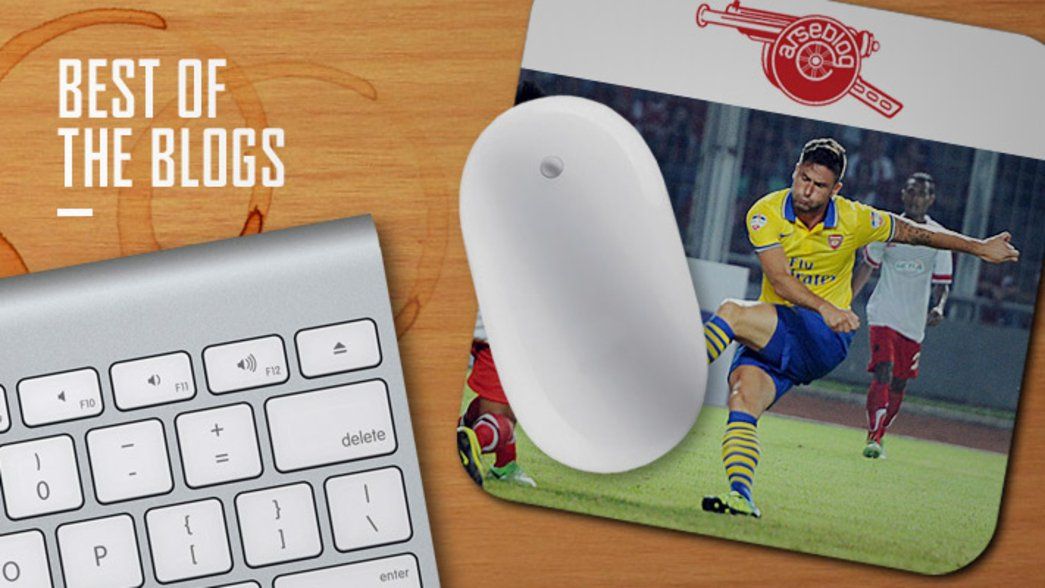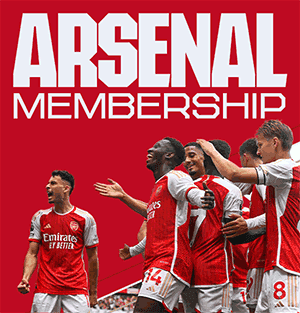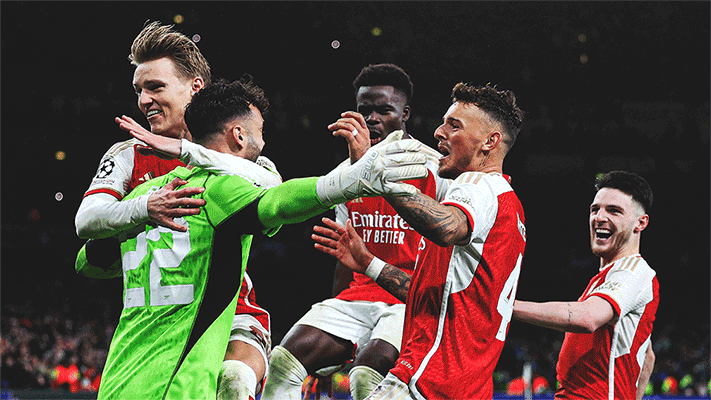By Anam Hassan (@ArsenalColumn)
Is it not possible that, before even adding to the squad, Arsenal are a better team than they were last season? It’s not what fans want to hear but that underlying principle is what Arsene Wenger has chosen to make the focus for his preparations for the new season rather than get dragged into the melodrama of the transfer market. On the other hand, it feels like he’s dithering, uncertain just how to use the £70m warchest supposedly at his disposal.
Secretly, it is said that Wenger has lost a little love for the transfer market and he has recently claimed there is little value available - either the prices are at “a very high level or no level at all,” he says. “That’s a big, worrying truth. Until now [this summer] you had £40m, £50m, £60m [fees] or nothing at all. It’s been under £10m or around the big numbers. I don’t think that’s very healthy.”
What we do know, however, from the pre-season games is that this is a healthy squad and that additions can only improve them further. Results in Asia were promising, but then the same problems resurfaced at the Emirates Cup before ending on an upbeat note with a 3-1 win over title rivals Manchester City. We learned that two seasons on, an Arteta-less Arsenal is a still a little worse-off Arsenal, and that not just a striker, but a defender and perhaps a creative player are required. Below, highlights just how Arsenal are shaping up 0 on the pitch - for 2013/14.
An improved Olivier Giroud
Even as the players marched off the pitch after a rain-soaked match against Vietnam - a game which Arsenal won 7-1 - the fans weren’t quite satisfied, so Olivier Giroud decided to give them more. In front of a crowd of 41,000, he stripped off his shorts and flung them into the crowd. Actually, this story has no relevance to the rest of the post but my God, is he a handsome fellow.
In that match Giroud scored a hat-trick, a very classy one too. Indeed, all his goals in pre-season, eight in seven matches, have been impressive* indicating an improvement to the one part of his game that sorely needed work - his finishing. Last season, Giroud’s conversion rate was at a measly 10.3 per cent (a good striker should hope for a conversion rate of about 18 per cent).
"All Giroud's goals in pre-season, eight in seven matches, have been impressive - indicating an improvement to the one part of his game that sorely needed work, his finishing"
Not just that, delving into those numbers see him wildly erratic inside the box. He took 64 shots from the central area, scoring nine goals but only at a conversion rate of 14 per cent. Hardly an improvement from his overall figure. Not just that, a lot of his shots were off target (and his headers were mainly straight at the goalkeeper). As a comparison, Luis Suarez was just as uncouth around the box but scored more goals: 23 at a conversion rate of 12 per cent. But filtering those shots he took from the central areas of the box, and his conversion rate jumps to 26 per cent.
I feel it’s important to make the distinction of where Arsenal’s strikers (and potential strikers) shoot from because it’s the least spread of any Premier League side - most of the shots are very central. Giroud must improve and so far the signs are promising.
*Actually recounting those goals, they have been of a startling variety including a deft flick, an Ibrahimovic-style swivel and shot, a power header, a half-volley across the goalkeeper, a chip, an overhead kick, an edge of the box curler and a lob over the ‘keeper.
Pressing matters
In the two Emirates Cup games, we saw two different pressing performances. Both games saw Arsenal broadly used the same strategy: press with a 4-4-2 with the midfielder playing highest up closing down with the main striker. The players behind, therefore, were detailed to get tight to the opposition so that the pass through is made difficult. In the 2-2 draw with Napoli, Arsenal used Tomas Rosicky as the highest midfielder and the pressing up the pitch was exemplary. Against Galatasaray, though, it was less excellent.
However that was expected given that the game was played a day later but the pleasing part, that is until Didier Drogba came on, was the defending around the penalty area. Much of that owed to the presence of Mikel Arteta who was missing against Napoli. In that match, both Aaron Ramsey and Jack Wilshere shared that role and as a result, Arsenal were often exposed, especially on the break, when the ball was played through and there was nobody to protect the defence.
Arsenal put a more complete performance in the 3-1 win over Manchester City both up the pitch and around their own box, yet it’s hard not to think about whether Arsenal have a contingency plan for when Arteta is not available. The Wilshere-Ramsey partnership against Napoli reminded me of the partnership between Flamini-Fabregas - in 2005/06, not the one that went close to the title two years later. Hopefully, the much rumoured transfer of Bayern Munich’s holding midfielder, Luiz Gustavo, might alleviate such worries.
"Wilshere is central to the way Arsenal will play next season"
Let Jack be Jack
Even Arsene Wenger has admitted that Jack Wilshere’s short-term role is not obvious. The fact that Wilshere can do everything - tackle, dribble past opponents, make crucial passes - make it less clear and indeed, in pre-season, he played all three midfield roles: in front of the defence, in between and as the playmaker. In a sense, it doesn’t matter if he doesn’t underpin his best role just yet; he’s got so much talent that he will naturally move between positions and still contribute.
Wenger knows he’s crucial and the stats concur: last season, Wilshere was involved in the most Premier League goals - not simply in assists or scoring but starting attacks whether through a pass or tackle. He’s central to the way Arsenal will play next season.
Cool runnings
Two players stood out last season for what they did without the ball. Aaron Ramsey made himself an indisputable starter for his role as the “runner” alongside Mikel Arteta, breaking up attacks and making strong burst forwards. While Theo Walcott has always been a reliable outlet for Arsenal’s passing game. The pair impressed in pre-season and combined with each other twice against Manchester City to prove that they will be key players next season.
The first saw Ramsey play a delightful through-pass to Walcott to score and for the second, they exchanged a one-two before Ramsey applied the finishing touch. Both players have been derided by sections of support in recent times but they are showing they can be crucial to the team for the way they transform Arsenal’s tippy-tappy system.
Bringing sexy back
Arsène Wenger’s tactical reputation has been predicated on his insistence on playing the game one way: “his way”. Last season, though, he showed his willingness to be flexible (something, to be fair, he has been more willing to do since 2005/06), reverting to a pragmatic approach. It was a design based on efficiency, greater organisation and communication at the back, and very reliant on taking what little chances the team creates. It wasn’t always pretty but it was certainly efficient.
But it must not be forgotten why Wenger chose to go with this approach. Yes, their Champions League future was in great danger but also their football - the Wenger way - looked for once, very vulnerable and the players lacked the confidence to execute it properly. Wenger said focusing on the defence slowly helped regain their confidence and subsequently their results. “That’s where we’ve improved the most,” Wenger told Arsenal Player. “It’s very important for the confidence of the team that we have such a [defensive] stability. As I said many times, we are an offensive team, but you are only a good offensive team if you have a good defensive stability. In the last two months that was much better.”
"The understanding between the British core in particular looks promising, and in periods in pre-season, the team has moved the ball about beautifully and at a high tempo"
There’s no doubt that Wenger will take that approach on to the new season, as we’ve seen in the pre-season games, and hope that Arsenal’s swagger going forward returns. We’ve seen signs; the understanding between the British core in particular looks promising, and in periods in pre-season, the team has moved the ball about beautifully and at a high tempo. Somewhere along the line though, we’ll see that pragmatic approach altered to get more out of the attack. It’s inevitable. Wenger wants his team to play quickly, the players pinging the ball off each other and using Giroud as a fulcrum.
We saw how that approach may work in the 2-2 draw against Napoli where Arsenal played without a defensive midfielder. Instead, in the middle, Wilshere played alongside Ramsey and while the football was more entertaining, the Gunners were continuously exposed on the break. The team also stretched the pitch very wide when attacking and pushed both full-backs forward, going at odds with the new pragmatic approach which is all about compactness.
It will be intriguing to see how Arsenal’s style develops as the season progresses. Because it must not be forgotten that this is still a very new team with players such as Giroud, Cazorla and Podolski, not to mention Arteta in a new role, still learning how to play with each other. As such, Wenger has cause to be optimistic; with a season under their belts, Arsenal are a better team than last season - before signing any players.










